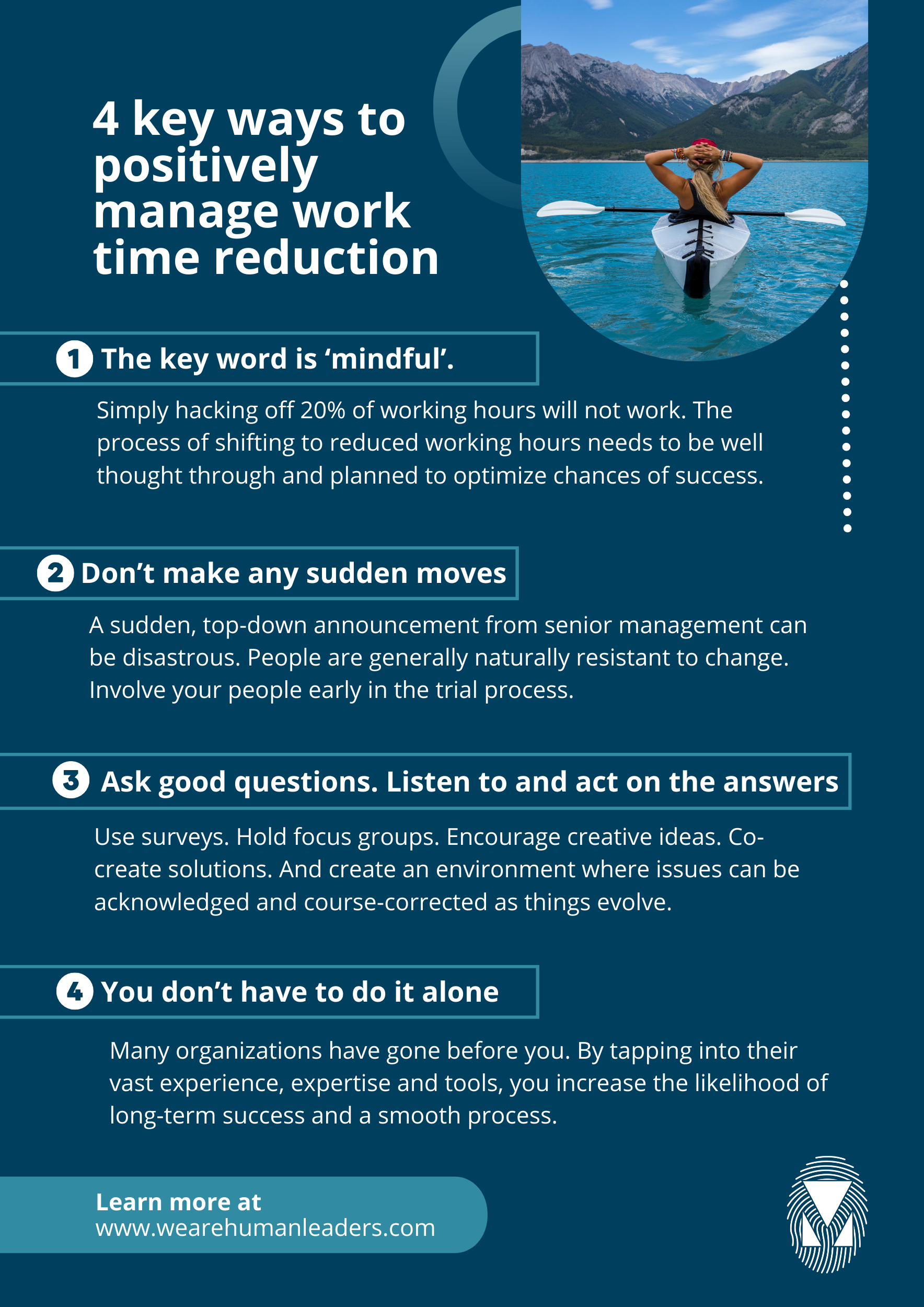Working Less to Work Better
Studies show that in 8-hour work days, the average employee is only productive for around 3 hours. And yet, many of us still struggle to do what is expected of us during the ‘regular hours’ of a 5-day week.
For many, this is down to aspects of poor work design that are beyond our immediate control. These might include frequent interruptions, unnecessary meetings, ineffective means of communication and working, poor organizational systems and structures, and toxic leadership.
When these negative aspects of our work life accumulate, they can feel like death by a thousand paper cuts. It becomes difficult to say exactly why we reach the end of our workday exhausted, demotivated and feeling like we barely got anything done. And because we feel like we’re never keeping up, the idea of changing how we work seems overwhelming. Which leaves us feeling stuck, if not burnt out.
“When these negative aspects of our work life accumulate, they can feel like death by a thousand paper cuts.”
It takes time and effort to identify and redress these issues. It takes courage on the part of leadership. And that’s exactly what a mindful shift to reduced working hours can offer.
How to make reduced working hours a success
As Human Leaders, we support ways of working that embed wellbeing as a component of our working lives. We believe work can be a part of life that supports us to thrive, rather than something to be recovered from or merely survived.
This is one of the reasons why we support a mindful shift to reduced working hours.
Shifting to reduced working hours offers a lens through which we can evaluate and redesign work processes and expectations. So that these serve people’s wellbeing, rather than diminish it.
Curious? Here are 4 things for Human Leaders to bear in mind to ensure this shift has a positive impact for your organization and its people.
The key word is ‘mindful’.
Simply hacking off 20% of working hours will not work. The process of shifting to reduced working hours needs to be well thought through and planned to optimize chances of success
Don’t make any sudden moves.
A sudden, top-down announcement from senior management can be disastrous. People are generally naturally resistant to change. They may interpret it as ‘yet another reorganization’ or an attempt to reduce headcount, which can deplete trust. Involve your people early in the trial process.
Ask good questions. Listen to and act on the answers.
Use surveys. Hold focus groups. Encourage creative ideas. Co-create solutions. And create an environment where issues can be acknowledged and course-corrected as things evolve. When you involve people in the process, you foster intrinsic motivation and a powerful sense of autonomy. They feel invested in the outcome, too.
You don’t have to do it alone.
Many organizations have gone before you. And the Work Time Reduction Center of Excellence works specifically to support organizations through this process. By tapping into their vast experience, expertise and tools, you increase the likelihood of long-term success and a smooth process.
Why not start now?
The data is irrefutable: working fewer hours helps us live better.
Which is why Human Leaders is proud to partner with the Work Time Reduction Center of Excellence. Together, we’re creating a world where people, business and societies thrive through work.


